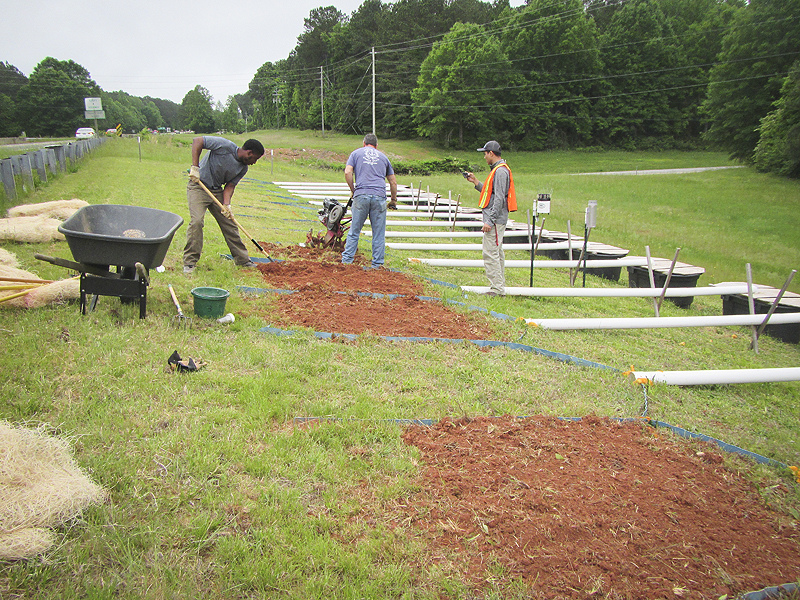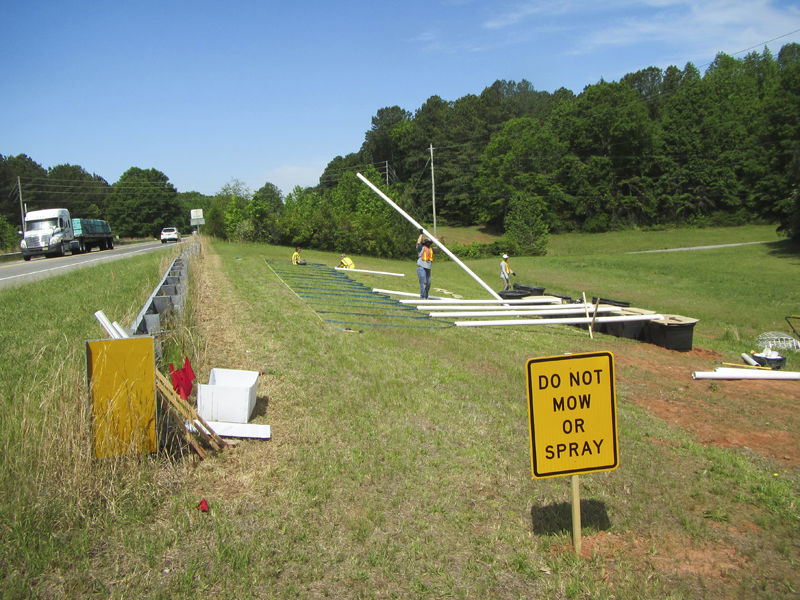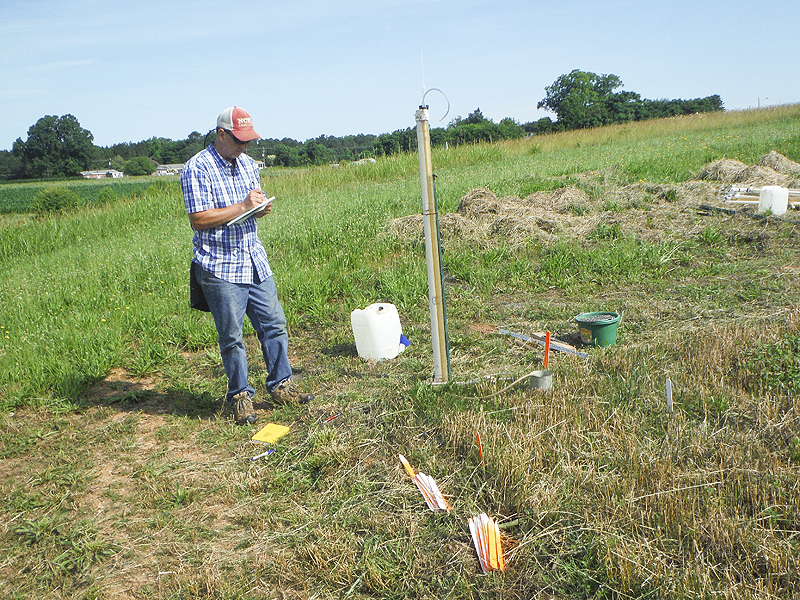Helping roadside soils bounce back after construction
January 20, 2020 - Kaine Korzekwa
Everyone hates road construction, even the soils and bodies of water around the roads. Paved roads can’t absorb water, so that responsibility falls to the soil next to the road. Unfortunately, those soils are often damaged during construction.

Water that runs off roads can contain harmful contaminants. If that water doesn’t infiltrate into nearby soil, those contaminants can make their way into bodies of water and be harmful. Rich McLaughlin and his research team at North Carolina State University have been working on how to help soil be healthy and happy after road construction.
Over the years, McLaughlin’s team noticed contractors were trying to grow grass on soils near roads after construction. They noticed this didn’t seem to be working well. So, they began to test the soils. Results showed the soils were very compacted and little water was getting down into the soil.
“Not only did this compaction prevent grass from growing, much of the unpaved area beside the road was shedding water as quickly as paved roads and roofs,” McLaughlin explains. “Over the past decade, we have worked to help grass become better established after construction. This also means that water can better infiltrate into these soils.”
Most recently, the team has been studying the benefits of tilling and adding things, called amendments, to the soil. They want to see if this can help reduce the amount of runoff. This runoff can contain heavy metals, petroleum products, sediment, and excess nutrients. These would normally run into the stormwater system.

In a recent study, they established plots next to roads where they could try different treatments and collect runoff from the soil. Researchers inserted barriers into the soil around each plot to send the runoff into a pipe, connected to a collection tub.
They found that tilling the soil and sometimes adding compost could greatly improve the infiltration for years after it was applied. On soils that had vegetation for many years, the improvements were less dramatic (but still considerable).
“Previous studies indicated that a good stand of vegetation helps maintain the high infiltration rates generated by tillage, and that’s the main benefit,” McLaughlin says. “Water and contaminant uptake by the plants is helpful, but the effects on soil’s physical properties is the most important.”
Part of their recent work tested two different kinds of vegetation: grasses and wildflowers. Grasses are cheaper and quicker to establish but need to be mowed three or four times per year. The wildflowers seemed to help improve infiltration a bit more than grasses.

Wildflowers can also provide food and habitat for important pollinators like butterflies, which are in decline worldwide. They are also mowed less, cutting down on compaction from mower wheels. The researchers think the added benefit might be coming from the roots of the wildflower plants but haven’t tested this thoroughly.
McLaughlin adds that as the human population grows and more roads are constructed, it’s becoming important to manage this runoff. Helping runoff trickle down into soils where possible is one of the easiest ways to tackle the problem. The next step in the research is trying different wildflower types and mixes to test their effects.
“Improving soil physical conditions through tillage and amendments is what a typical gardener might do,” he says. “The key factor, however, is that vigorous plant growth immediately after tillage is needed to maintain that condition, and no further tillage or amendments are needed. I’m always looking for ways to improve water quality in our lakes, streams, and estuaries because I enjoy all kinds of water-oriented activities, none of which are enjoyable in polluted waters.”
McLaughlin presented his research at the 2019 International Annual Meeting of the American Society of Agronomy, Crop Science Society of America and Soil Science Society of America. This research was supported by the North Carolina Department of Transportation Roadside Environmental Unit.
